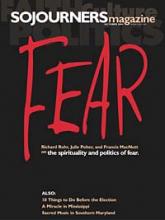When Magic Johnson, that talented and affable basketball player, announced in 1991 that he was HIV-positive, most of us reacted with a combination of sadness and horror. It all seemed a little too close to home. Given the dire headlines and horrendous statistics at that time, most people assumed Johnson would be dead in a few years. And if Magic Johnson could be infected, wasnt it possible that the rest of us were in danger?
Thirteen years later, Magic Johnson is alive and well. He has traded in a basketball uniform for a suit and amassed a fortune as a savvy businessman. He does not appear to be unhealthy and has been quoted as saying that his infection level is actually lower than it was when he was first diagnosed. Johnson has become the most visible symbol of why Americans no longer worry about AIDS.
Meanwhile, more than 10 million people who were infected around the same time as Johnson or more recently have died, according to United Nations statistics. Most have died never knowing they were HIV-positive. Many have gone on to infect their spouses and then their children. And only a very small percentage even knew that their death was not inevitable.
Nowhere is the chasm between the haves and have-nots in the world wider and deeper than in the HIV/AIDS pandemic.
Johnson, a healthy and wealthy man, had access to the latest drug therapies of the time, was well-nourished, and had the best doctors money could buy. By 1994, anti-retroviral drugs were available to most AIDS patients in the United States. Treatment with these drugs was so effective that the "Lazarus Effect" is now used as a description of what happens to AIDS patients who receive drug therapy.
Read the Full Article
